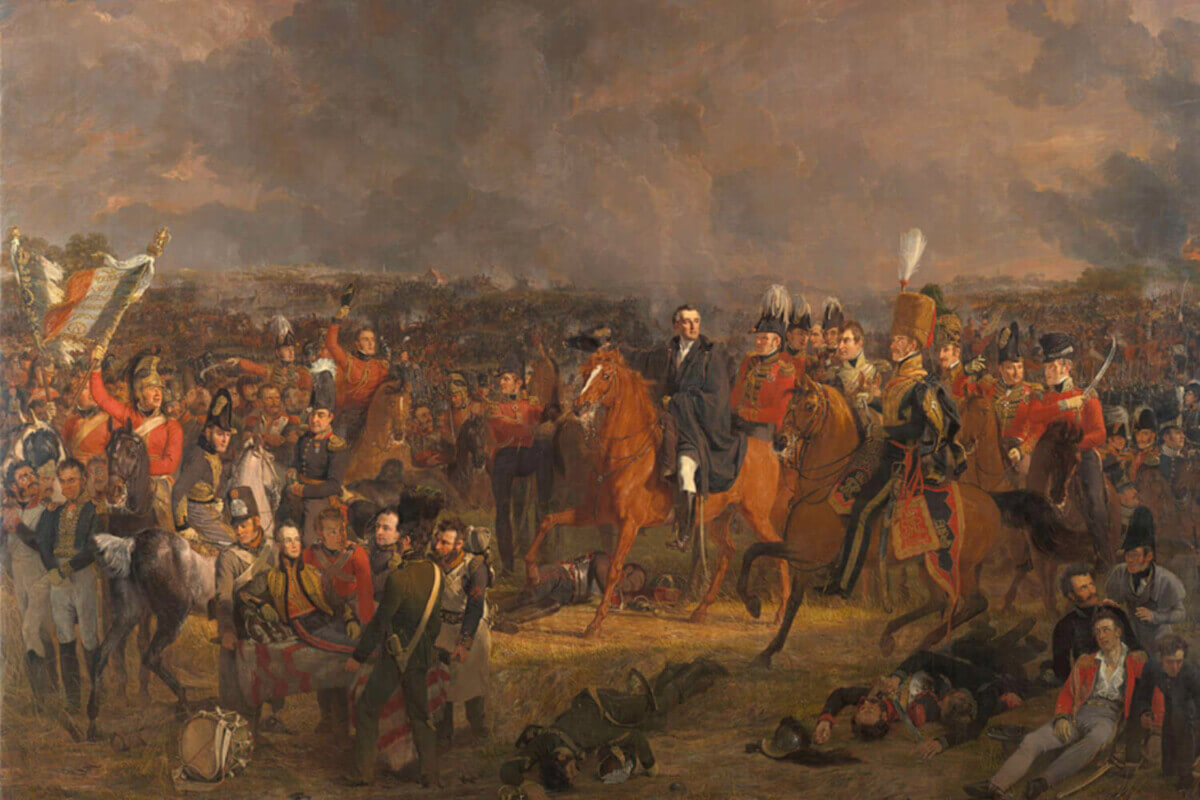
Batalla de Waterloo - Jan Willem Pieneman La bataille de Waterloo (1824, Rijksmuseum, Amsterdam) de Jan Willem Pieneman (1779-1853)
GLASGOW, Scotland — The bones of soldiers killed during the Battle of Waterloo were sold off as fertilizer, according to new research. Soldiers who died may well have unwittingly been repatriated as bones, and spread on the farms of Britain after being ground down.
The Battle of Waterloo took place ten miles from Brussels on June 18, 1815. There were close to 25,000 casualties on the French side and around 23,000 for the Allied army. Yet mysteriously, few human remains have ever been found. The most plausible explanation is they were taken back to Britain and turned into bone-meal, say Scottish scientists.
Bones are rich in calcium and phosphorous — especially those of fit young Army recruits who fought in the Battle of Waterloo. Vegetable plants suck the nutrients from soil to help them grow. Farmers usually grind up carcasses of slaughtered cattle. But human skeletons would be just as effective.
“At least three newspaper articles from the 1820s onwards reference the importing of human bones from European battlefields for the purpose of producing fertilizer,” says lead author Tony Pollard, a professor from University of Glasgow Centre for War Studies and Conflict Archaeology, in a statement. “European battlefields may have provided a convenient source of bone that could be ground down into bone-meal - an effective form of fertilizer. One of the main markets for this raw material was the British Isles.”
The study coincides with the 207th anniversary of the Battle of Waterloo. It is also based on an analysis of original data including newly found battlefield descriptions and drawings. They were made by people who visited in the days and weeks following Napoleon's defeat, describing exact locations of three mass graves with up to 13,000 bodies.
Letters and personal memoirs from James Kerr, a Scottish merchant living in Brussels at the time, tell of men dying in his arms. But it is unlikely the long-lost bones of those who made the ultimate sacrifice will ever be recovered. “Artistic license and hyperbole over the number of bodies in mass graves notwithstanding, the bodies of the dead were clearly disposed of at numerous locations across the battlefield,” explains Pollard. “So it is somewhat surprising that there is no reliable record of a mass grave ever being encountered.”
The Duke of Wellington's victory is one of the most historic in British history, ending a war across Europe that lasted 23 years.
“Waterloo attracted visitors almost as soon as the gun smoke cleared,” says Pollard. “Many came to steal the belongings of the dead, some even stole teeth to make into dentures, while others came to simply observe what had happened. It is likely an agent of a purveyor of bones would arrive at the battlefield with high expectations of securing their prize. Primary targets would be mass graves, as they would have enough bodies in them to merit the effort of digging the bones.
“Local people would have been able to point these agents to the locations of the mass graves, as many of them would have vivid memories of the burials taking place, or may even have helped with the digging,” he continues. “It is also possible the various guidebooks and travelogues that described the nature and location of the graves could have served essentially as treasure maps complete with an X to mark the spot. On the basis of these accounts, backed up by the well attested importance of bone-meal in the practice of agriculture, the emptying of mass graves at Waterloo in order to obtain bones seems feasible and the likely conclusion is that.”
He hopes to “shut the case” by leading an ambitious geophysical survey over several years. Veterans will be recruited to join the dig, providing fresh insight for an international team of world renowned archaeologists. Care and recovery will be provided.
“The next stage is to head back out to Waterloo, to attempt to plot grave sites resulting from the analysis of early visitor accounts reported here,” adds Pollard. “If human remains have been removed on the scale proposed then there should be, at least in some cases, archaeological evidence of the pits from which they were taken, however truncated and poorly defined these might be. Covering large areas of the battlefield over the coming years, we will look to identify areas of previous ground disturbance to test the results of the source review and distribution map. In conjunction with further documentary research, some excavation will provide a much more definitive picture of the fate of the dead of Waterloo.”
Any Battle of Waterloo remains would be an extremely rare discovery. In 2015 a human skeleton was uncovered during the building of a new museum and carpark at the site. Then in 2019, amputated human leg bones were unearthed by the Waterloo Uncovered team in an excavation of the main allied field hospital. There is also a skeleton of uncertain provenance in the museum in Waterloo. No other significant remains have ever been found.
Bone-meal is used by farmers and gardeners to add phosphorus to soil. It is made from powdered animal bones, normally beef, but they can be from any slaughtered livestock. The meal is steamed to increase availability of calcium and phosphorus - which are essential for plants to flower.
The study is published in the Journal of Conflict Archaeology.
South West News Service writer Mark Waghorn contributed to this report.










